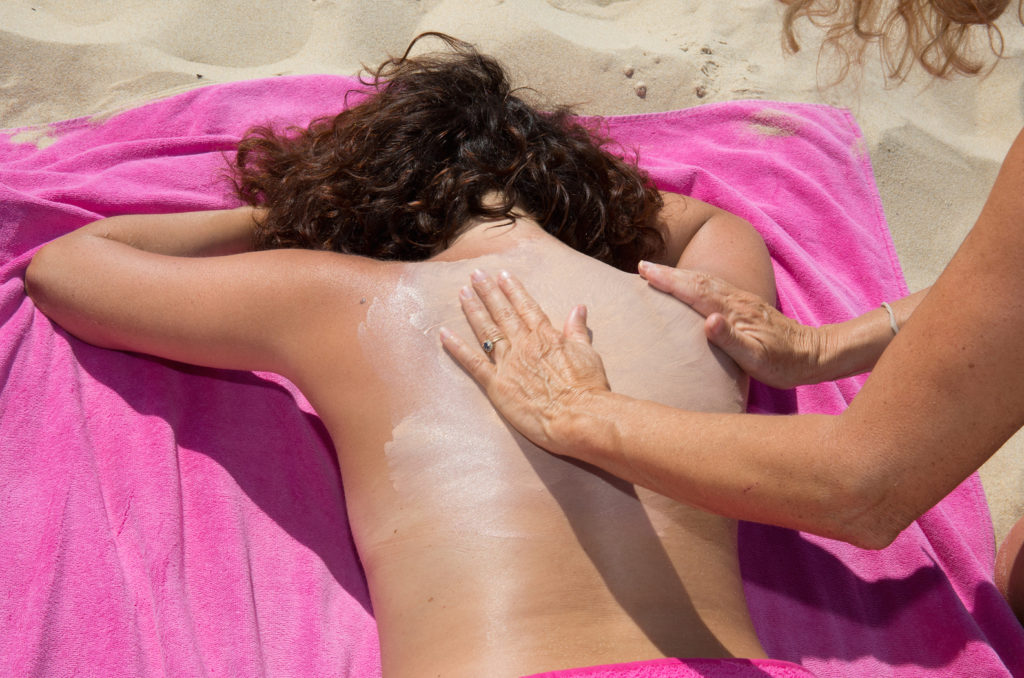
Sunscreens: Some Do More Harm Than Good
Do you know which sunscreens work? And which do more harm than good…?
Everyone loves a day at the beach: swimming, playing in the waves, lounging on the beach with a good book, or exploring the shore. But before we head out to play and enjoy the great outdoors, let’s not forget to protect ourselves from the risks of sunburn and skin cancer. But keep in mind: not all sunscreens are created equally…
How to Protect Yourself
The sun’s rays are composed of two types of rays UVA & UVB.
AVB is considered good and is the highest midday. However, the UVA rays pack the burn factor; they’re the strongest in the morning and late afternoon.
That being said, you should always have your sunscreen on no matter what time of day — even when it’s overcast.
Roll-ons, Sprays, Gels, Lotions. With so many choices, how do we know what’s best?
What not to do…
Stay away from toxic chemicals. Parabens are just the tip of the iceberg. Research shows that most of these chemicals below disrupt hormones. This is especially dangerous for young children or pregnant women.
Scary, right? So make sure your sunscreen does not contain the following:
Para amino benzoic acid
Octyl salicylate
Avobenzone
Oxybenzone
Cinoxate
Padimate O
Dioxybenzone
Phenylbenzimidazole
Homosalate (HMS)
Sulisobenzone
Menthyl anthranilate
Trolamine salicyclate
Octocrylene
benzophenone-3 (Bp-3)
homosalate (HMS)
4-methyl-benzylidene camphor (4-MBC)
octyl-methoxycinnamate (OMC)
octyl-dimethyl-PABA (OD-PABA)
butyl-methoxy-dibenzoyl methane (B-MDM)
But you’ve still got to protect your skin and not just during summer. Snow reflects up to 80% of the sun’s UV light, and that really packs a punch. Especially when you’re out all day like these guys:
What to do? Keep it simple!
- Simple ingredients like zinc oxide or titanium dioxide do not penetrate the skin and are less likely to irritate. They’re even suitable for babies and sensitive skin.
- Use a 30 SPF (sun protecting factor) or higher. 30 SPF blocks 97 percent of the sun’s rays. Anything with a higher than 30 SPF will block slightly more, but no sunscreen blocks 100% of the sun’s damaging rays.
- Sunscreen should be reapplied every 2 hours when outdoor and immediately after swimming or sweating. The label might claim the product is waterproof or sweatproof, but that’s likely not the case. Better safe than sorry: reapply.
- Sprays are inadequate and should not be breathed into the lungs. If you have to use one (nothing else is available), never spray onto the face. Instead, spray the product into your hands and then apply it to your face that way.
How much is enough?
The dermatologist’s rule of thumb for adequate coverage is 1 teaspoon each for the arm, face, and scalp. Then, increase to 2 teaspoons for your torso and each leg.
Protect your eyes with sunglasses; protect your head with a hat or scarf.
Enjoy the Sun Safely
Remember: Sunny days are fun but can be dangerous whether it’s winter or summer. So remember to stay safe with these simple rules. Cover sensitive skin and use natural sunscreen whenever possible. And re-apply, re-apply, re-apply!
